Believe me, folks. The kiwi bird is truly the “superbird” of the avian world.
Hello! I am a kiwi bird.
For those who don’t know what a kiwi is, let me clarify that I am the mascot of New Zealand. Why they consider me a mascot is unclear, but I believe these folks truly deserve that title.
After all, the kiwi is an extremely special species, and you wouldn’t believe how unique we are.
1. I have wings, but they are the most “strange” wings in the bird world
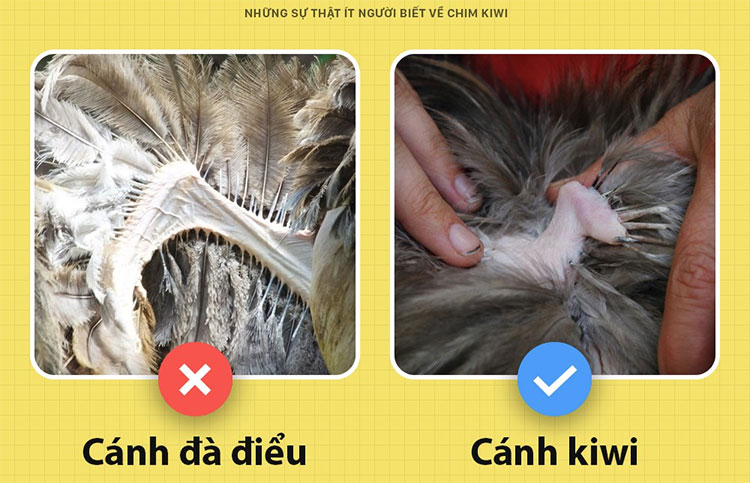
On this earth, there are over 10,000 bird species, and only 60 of us don’t know how to fly. Among them is yours truly, the kiwi.
Because I can’t fly, my body was equipped from birth with everything needed to run as fast as possible. For instance, I hatch very quickly, and my belly fills with yolk so I can survive without food for at least 2.5 weeks. The faster we run, the higher our survival rate.
And also because I can’t fly, my wings have evolved to… become useless. But I still have wings; they are just the smallest and most deformed in the bird world.
2. Our mothers are the real “superbirds”
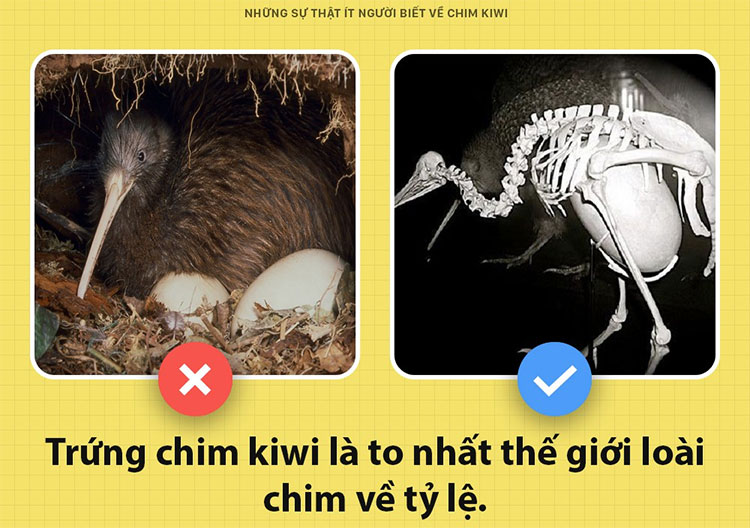
We kiwis are small, flightless, look harmless, and seem… useless. But let me tell you, we are a resilient species, especially the female kiwis.
The resilience I’m referring to here is related to childbirth. Our eggs are among the largest in the bird world relative to our body size. My egg, for example, accounts for over 25% of my mother’s weight.
We kiwis are small, about the size of a broiler chicken. But our eggs are six times larger than chicken eggs. To put it in perspective, it’s like a human woman giving birth to a baby weighing nearly 18 kg, not including the amniotic fluid!
That’s why our mothers are truly superbirds!
3. Blind as a bat, but with the best hearing in the bird world
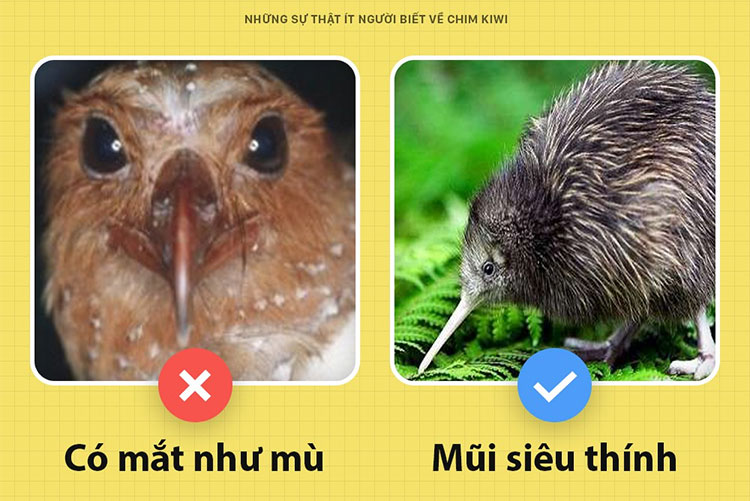
We kiwis are nocturnal, but honestly, whether it’s day or night, our eyes are completely useless; we can’t see a thing.
However, in return, my sense of smell is better than that of other birds. I hear that it’s because I have more scent receptors in my nose than the rest of the world. Well, the world may have a nose but lacks sight; we accept it.
4. My name has a special writing rule!
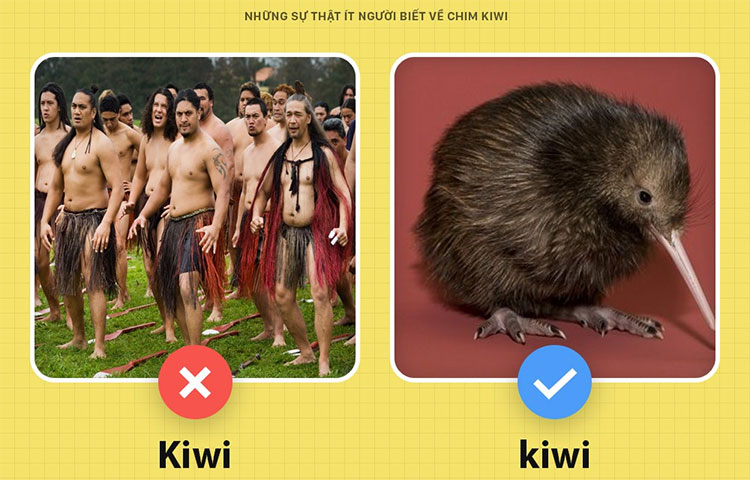
Remember this: when referring to my name, never write “Kiwi” with a capital “K”. That’s a general term for those who are “from the same hometown” as us (New Zealand is the land of the Kiwi).
We are simply “kiwi,” remember that!
5. Never think you can fool us
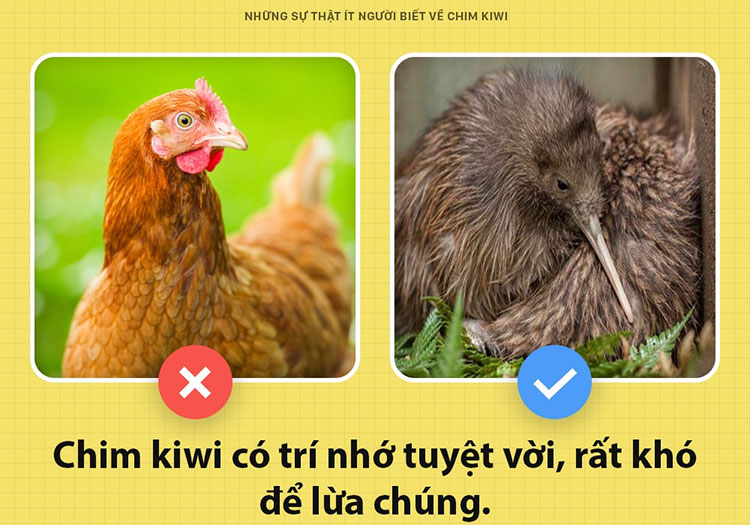
While I can’t compare to the likes of parrots and crows, I take pride in the fact that we kiwis have an excellent memory.
If I remember correctly, humans once tried to fool us using recorded sounds of our kind. But they only succeeded the first time. After that, we remembered how the sound came from the speaker and were never fooled again.
Besides the above, here are some adorable facts about this bird:
1. Kiwi birds are nocturnal; they love foraging at night.
2. Kiwi is the only bird species in the world with nostrils located at the end of their beak. This helps them smell better when searching for worms to eat!
3. Kiwi birds have very soft feathers. Their feather-like hairs help them camouflage easily in the forest. This also makes them even cuter.
4. It is very rare for kiwi birds to be born completely white, which is due to a recessive gene – not to be confused with albinism, but they are still extremely adorable.
5. One of the biggest natural predators of kiwi birds is the stoat, a member of the weasel family, which loves the taste of kiwi birds.
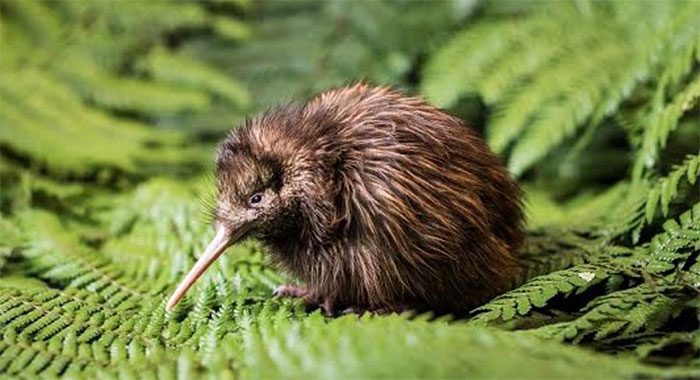
Kiwi birds are very loyal.
6. Due to many differences from other birds, kiwis are sometimes called “honorary mammals.”
7. The Māori people of New Zealand often hunt kiwis for their meat and soft feathers, but only on very special occasions, as they believe that kiwi birds are protected by the forest god Tane Mahuta.
8. Kiwi birds are very loyal – they usually have only one mate for 20 years or even longer!
9. Their scientific name is “Apteryx,” or in Japan, they are called “kiwi-Chan.”
10. Kiwi eggs are 65% yolk. This provides the kiwi chicks with enough nutrients to grow feathers after hatching and live independently.
11. The image of the kiwi bird is used in many cultural regions of New Zealand, from coins to candies and even their Air Force emblem. Yes, a flightless bird is the symbol of the Air Force.
12. There are five species of kiwi: Brown kiwi, Great spotted kiwi, Little spotted kiwi, Rowi, and Tokoeka. Rowi is the rarest species, with only about 450 individuals remaining in New Zealand today.
13. Kiwis are carnivorous birds; their closest relatives are the elephant birds from Madagascar. Kiwis weigh 1-2 kg when fully grown.

It is estimated that only 5% of kiwi chicks survive to adulthood.
14. There are approximately 68,000 kiwi birds left in New Zealand. They are an endangered species. New Zealand has established many kiwi reserves and breeding programs across the country. It is estimated that only 5% of kiwi chicks survive to adulthood.
15. There are over 20 kiwi bird reserves throughout New Zealand that you can visit to see kiwis. Kiwis have the smallest beak in the world. The nostrils of a kiwi are located right at the tip of its beak.
16. How kiwis arrived in New Zealand remains a mystery. There are three main hypotheses: First, the ancestors of kiwis existed when New Zealand separated from Antarctica and Australia 60 million years ago. The second hypothesis is that when the land broke apart, kiwis moved from one island to another, eventually reaching New Zealand. The third hypothesis is that the ancestors of kiwis flew from one island to another to reach New Zealand.
17. Kiwi birds can live up to 50 years.
- A Strange Bird: Though Small, It Lays the Largest Eggs in the World
- Bird Species That Never… Fly
- Chilling Tragedy Occurs in 3 Minutes, Claiming Nearly 30,000 Lives
- The Appearance of Wang Qiaojun Restored to Its Original Form, Internet Users Shocked and in Disbelief
- Video: Crazy Ants Invade Christmas Island, Killing Millions of Red Crabs




















































